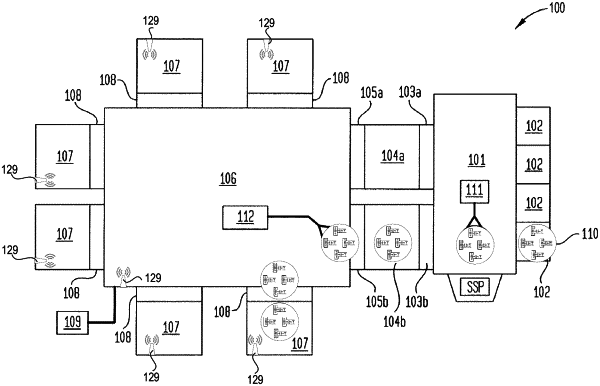| CPC H03H 9/02842 (2013.01) [H03H 9/02543 (2013.01); H10N 30/302 (2023.02)] | 14 Claims |

|
1. A sensor device comprising:
a first integrated sensor assembly, the first integrated sensor assembly comprising:
a first surface acoustic wave (SAW) sensor disposed on a substrate comprising at least a layer of a piezoelectric material, wherein the first SAW sensor is adapted to measure an environmental condition of an environment responsive to receiving a first incoming RF signal, the first SAW sensor comprising:
a first interdigitated transducer (IDT) formed on a first region of the piezoelectric material, the first IDT to generate a first SAW based on the environmental condition, responsive to receiving the first incoming RF signal; and
a second IDT formed on a second region of the piezoelectric material, wherein the second IDT is to receive the first SAW from the first IDT and generate a first oscillating electric potential associated with a first acoustic frequency of the received first SAW,
a first RF antenna formed on a third region of the piezoelectric material; and
a second RF antenna, coupled to the second IDT, formed on a fourth region of the piezoelectric material; wherein the first SAW sensor and the first RF antenna and the second RF antenna are integrated with one another on the piezoelectric material, and wherein:
the second RF antenna is to receive the first incoming RF signal;
the second IDT is further to generate a second SAW based on the environmental condition responsive to receiving the first incoming RF signal;
the first IDT is further to receive the second SAW from the second IDT;
the first IDT is further to generate a second oscillating electric potential associated with a second acoustic frequency of the received SAW; and
the first RF antenna is further to output an outgoing RF signal in accordance with the second oscillating electric potential.
|